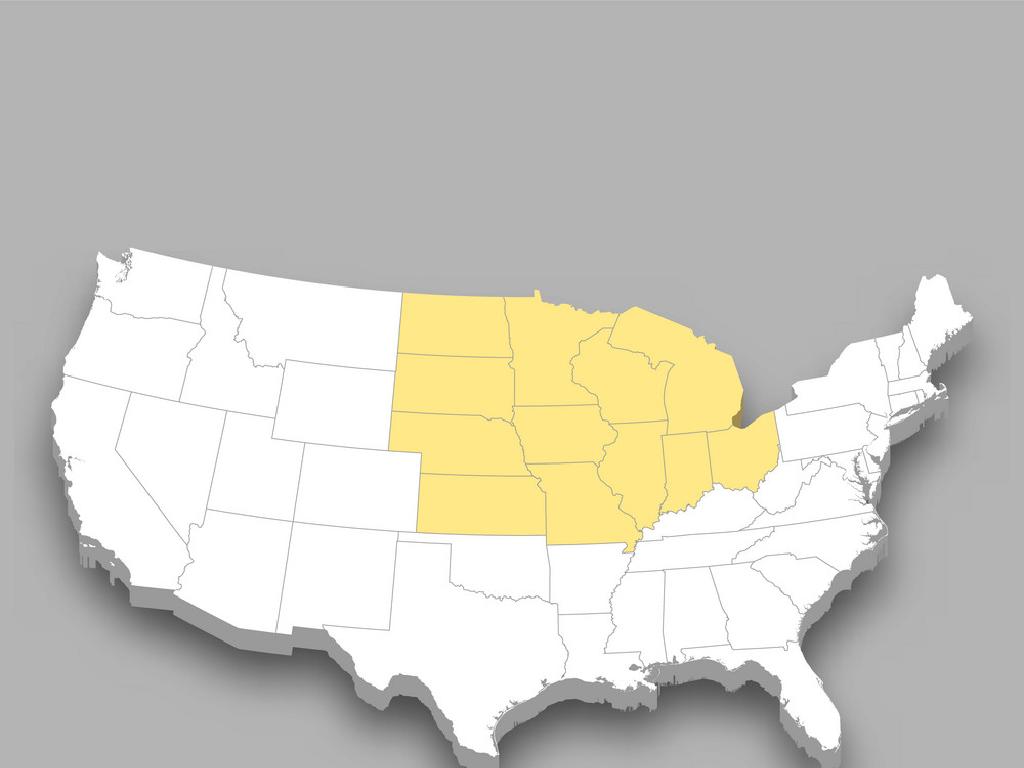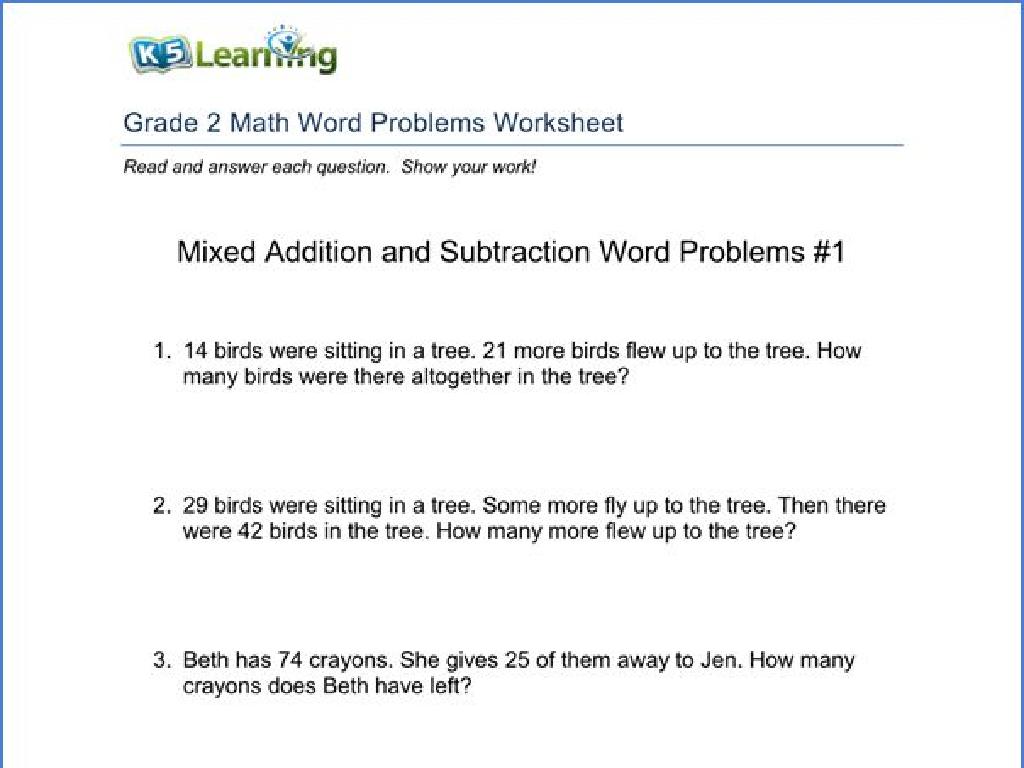Perimeter
Subject: Math
Grade: Sixth grade
Topic: Perimeter And Area
Please LOG IN to download the presentation. Access is available to registered users only.
View More Content
Welcome to Perimeter Exploration!
– Understanding space around us
– Defining perimeter
– Perimeter is the total distance around a 2D shape
– Importance of perimeter
– Used in everyday life for fencing a yard, framing pictures, etc.
– Exploring perimeter calculations
– Practice with different shapes to calculate their perimeters
|
This slide introduces the concept of perimeter as a fundamental aspect of geometry that relates to the space around us. Begin by discussing how we often measure the boundaries of spaces in our daily lives without realizing it. Define perimeter as the total distance around the edge of a two-dimensional shape and emphasize its practical importance in various real-world situations, such as determining the amount of material needed for a fence. Encourage students to think about where they encounter perimeters in their own lives. Conclude by explaining that we will explore how to calculate the perimeter for different shapes, setting the stage for hands-on activities and practice problems.
Understanding Perimeter
– Perimeter: total distance around
– Calculate by adding all sides
– For a rectangle, add lengths and widths
– Use consistent units of measure
– Inches, feet, meters, centimeters, etc.
– Practice with different shapes
– Try squares, rectangles, triangles
|
The perimeter is an important concept in geometry, representing the total distance around a 2D shape. To calculate it, students should add the lengths of all the sides together. It’s crucial to use the same unit of measurement for all sides to ensure accuracy. Provide examples with different units such as inches or centimeters. Encourage students to practice finding the perimeter of various shapes, including those with equal and unequal sides, to solidify their understanding. This foundational skill will be applied in more complex geometric problems and real-life situations, such as fencing a garden or framing a picture.
Calculating Perimeter of Shapes
– Perimeter of a Rectangle
– Add together lengths of all sides: P = 2l + 2w
– Perimeter of a Square
– All four sides are equal: P = 4s
– Perimeter of a Triangle
– Sum of all sides: P = a + b + c
|
This slide introduces students to the concept of perimeter for different geometric shapes. The perimeter is the total distance around the edge of a shape. For a rectangle, add the lengths of all sides, considering that opposite sides are equal. For a square, multiply one side by four since all sides are equal. For a triangle, add the lengths of all three sides. Use examples to illustrate these formulas, such as a rectangle with a length of 5 units and width of 3 units, a square with a side of 4 units, and a triangle with sides of 3, 4, and 5 units. Encourage students to practice with different measurements and to understand how the shape of an object affects the way we calculate its perimeter.
Perimeter in Real Life
– Calculating backyard fencing
– Measure all sides to determine how much fencing is needed.
– Framing a picture
– Add all sides of the picture to choose the right frame length.
– Garden border measurement
– Measure garden edges to plan for materials needed.
– Understanding perimeter usage
|
This slide aims to show students how the concept of perimeter is applied in everyday life. For instance, when fencing a backyard, one must measure all sides to determine the total length of fencing required. Similarly, when choosing a frame for a picture, the perimeter of the picture must be calculated to ensure the frame fits correctly. In the case of a garden, knowing the perimeter allows for accurate planning of the materials needed for a border. These real-life examples help students understand the practicality and importance of learning how to calculate perimeter. Encourage students to think of other examples where they might need to use perimeter outside of the classroom.
Let’s Calculate Perimeter!
– Perimeter of a rectangle example
– For a rectangle with length 5 cm and width 3 cm, Perimeter = 2*(length + width) = 2*(5 cm + 3 cm) = 16 cm
– Perimeter of a square example
– For a square with side 4 cm, Perimeter = 4 * side = 4 * 4 cm = 16 cm
– Perimeter of irregular shapes
– Add the length of all sides. If a shape has sides of 3 cm, 4 cm, 5 cm, and 6 cm, Perimeter = 3 cm + 4 cm + 5 cm + 6 cm = 18 cm
|
This slide provides practical examples to help students understand how to calculate the perimeter of various shapes. Start with the formula for the perimeter of a rectangle, which is the sum of twice the length and twice the width. Move on to the perimeter of a square, which is four times the length of one side. Finally, explain that the perimeter of an irregular shape can be found by adding the length of all its sides together. Encourage students to practice with these examples and come up with similar exercises to reinforce their understanding. Make sure to clarify that the units of measurement must be consistent when calculating the perimeter.
Class Activity: Perimeter Scavenger Hunt
– Find classroom objects to measure
– Work in pairs for perimeter calculations
– Use a ruler or tape measure for accuracy
– Share your findings with the class
– Discuss how you calculated the perimeters
– Reflect on the activity
– Think about what you learned about perimeter
|
This interactive activity is designed to help students apply their knowledge of perimeter in a fun and engaging way. Students will search for objects around the classroom that they can measure. Working in pairs, they will practice cooperation and problem-solving as they calculate the perimeter of each item. Afterward, they will present their findings to the class, which reinforces their understanding and public speaking skills. As a teacher, facilitate the activity by providing rulers or tape measures, ensuring students stay on task, and guiding them through the calculation process if needed. Possible objects to measure could include books, desks, whiteboards, or even the classroom door. Encourage students to explain their methods and reasoning during their presentations.
Homework Challenge: Exploring Perimeter
– Complete the perimeter worksheet
– Calculate the perimeter for each shape on the worksheet
– Measure home objects’ perimeters
– Use a measuring tape to find the perimeter of items
– Record your measurements
– Write down the perimeter of each item you measure
– Discuss your methods in class
|
This homework assignment is designed to reinforce the concept of perimeter through practical application. Students are provided with a worksheet containing various shapes for which they must calculate the perimeter. Additionally, they are tasked with measuring the perimeter of objects found in their home environment, which helps them understand how the concept of perimeter applies to real-world objects. Encourage students to use a measuring tape or a piece of string to measure the distance around objects. Remind them to record their findings as they will be discussing the methods they used to find their answers in the next class. This activity will help students grasp the concept of perimeter in a tangible way and prepare them for a more in-depth discussion.
Perimeter: Conclusion & Recap
– Recap of perimeter concepts
– Perimeter is the total distance around a shape.
– Accuracy is key in measurements
– Precise measurements ensure correct perimeter.
– Perimeter’s role in daily life
– Used in framing pictures, fencing yards, etc.
– Review and reflect on learning
|
This slide aims to consolidate the students’ understanding of the perimeter by summarizing the key concepts covered in the lesson. Emphasize the importance of accurate measurements when calculating perimeter, as this can affect practical applications such as buying the correct amount of materials for a project. Discuss how perimeter is relevant in everyday situations, such as determining the amount of picture frame material needed or the length of a fence required to enclose a backyard. Encourage students to reflect on what they have learned and to consider how they can apply these concepts to real-world problems. This reflection helps solidify their understanding and appreciation of the topic.






